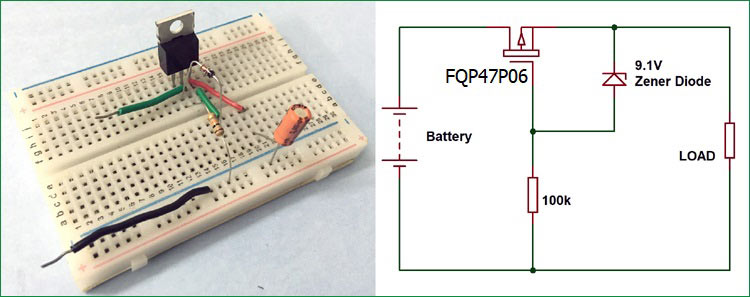I've been looking into reverse polarity protection and come across a lot of resources that recommend using a P-channel MOSFET with a Zener diode.
Every single one of these circuits shows the MOSFET reversed - as if current was flowing from drain->source, when in reality the current in P-FETs flows from source->drain.
Some of the articles even have a comment that echoes my confusion. Am I actually missing something here or is there some reason why all of these circuits seem incorrect?
A few examples:
If these circuits are wrong, then I assume it's more than just the MOSFET being reversed, and the Zener diode should still be between the source and gate. Is that correct?



